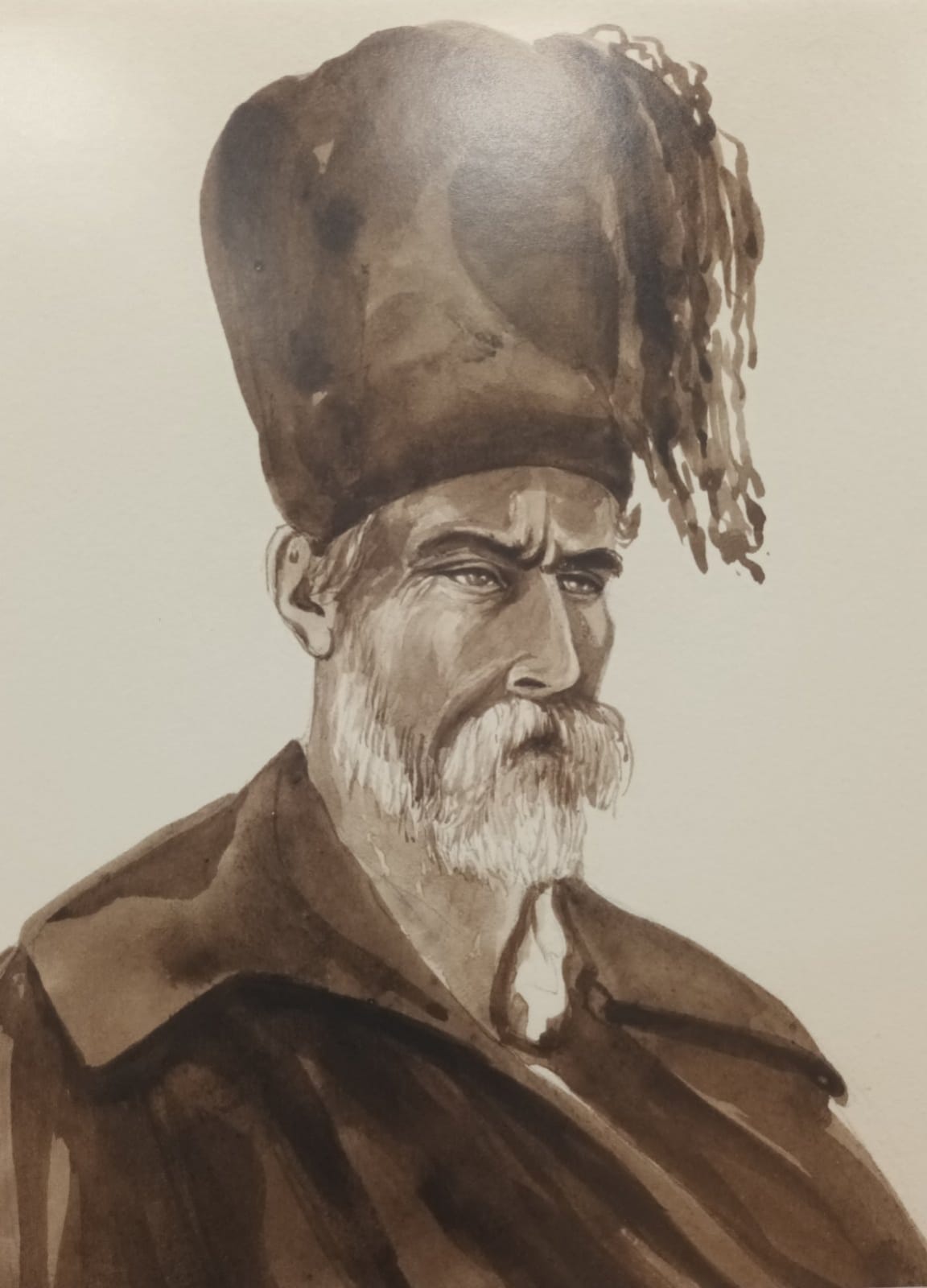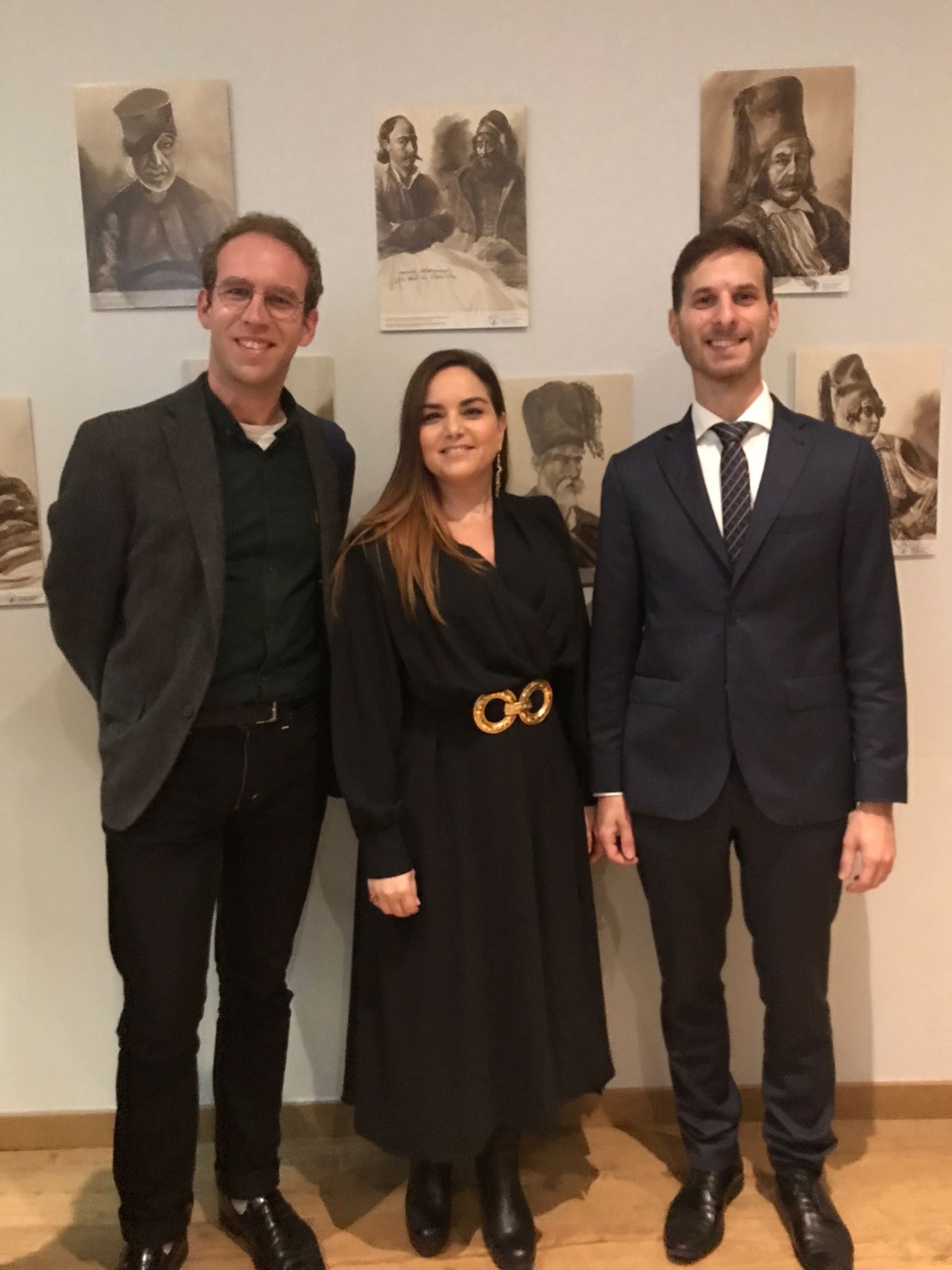“History has a Face” – Portraits of Greek Revolutionaries by Benjamin Mary at the Greek Embassy, Holland Park, London

These portraits, which have already been displayed in Athens at the National Museum courtesy of the Sylvia Ioannou foundation, were drawn between 1839 and 1844 by Benjamin Mary, the first Belgian Ambassador in Greece. Though Prof Gonda Van Steen, Koraes Chair of Modern Greek and Byzantine History, Language and Literature at KCL, reckoned these pictures were of “more ethnographic interest than artistic merit” in her pithy, entertaining presentation, the drawings of Makrygiannis, Kolokotronis, Hadjipetrou et al are real portraits. Their sitters look battle-weary, surely from both their revolutionary escapades and the Greek party political maelstrom that followed (one which Mary failed to navigate, leading to his being recalled to Paris on ‘sick leave’). They look old, their piercing stares not solely attributable to Mary’s heavy-handedness with the charcoal. But their traditional dress is vibrant, defiant, and lived in – not the pristine off-the-shelf number Byron wears in Thomas Phillips’ portrait of 1813.
Among the Hellenes sits the Glaswegian George Finlay, smoking a narghile. Alasdair Grant of the University of Edinburgh gave an overview of Finlay’s career as a political intermediary in the early years of independent Greece and as the first English-language historian of her last thousand years. Should any of you be up in Edinburgh, there is an exhibition at the University, Edina/Athina: The Greek Revolution and the Athens of the North, curated by Dr Grant, which runs until January 2022. Dr Jennifer Wallace of Peterhouse College, Cambridge gave a talk bursting at the seams with the complexity of the Greek independence movement, Philhellenism in Great Britain, Byron’s aptitude for proto-branding, and the modern faces of history – the diverse populace of 21st Century Greece and its status as one of the easternmost points of arrival into Europe for migrants and refugees.
Finally, actor Angeliki Petropetsioti gave readings from the memoirs of Kolokotronis and Makrigiannis. The former included a moving account of a last-minute stay of execution, but it was through the latter’s plain demotic prose (and Petropesioti’s vivd delivery) that the strongest sense of personality came. Among the military strategizing and political wrangling emerged the following passage, relevant to BCRPM’s interests, which dates from the 1850s and describes an event in the early 1830s:
Είχα δυο αγάλματα περίφημα, μια γυναίκα κι’ ένα βασιλόπουλο ατόφια – φαίνονταν οι φλέβες· τόση εντέλειαν είχαν. Όταν χάλασαν τον Πόρον, τα ’χαν πάρη κάτι στρατιώτες και εις τ’ Άργος θα τα πουλουύσαν κάτι Ευρωπαίων· χίλια τάλλαρα γύρευαν. Άντεσε κ’ εγώ εκεί, πέρναγα· πήρα τους στρατιώτες, τους μίλησα· «Αυτά και δέκα χιλιάδες τάλλαρα να σας δώσουνε, να μην το καταδεχτήτε να βγουν από την πατρίδα μας. Δι’ αυτά πολεμήσαμεν»
I had two wonderful statues, a woman and a young prince, intact – you could see their veins, they were so perfect. When they sacked Poros, some soldiers had taken them and were going to sell them in Argos to some Europeans; they were asking for one thousand talara… I took the soldiers aside and spoke to them: ‘Even if they give you ten thousand talara, don’t allow for these statues to leave our homeland. These are what we fought for.’ (Memoirs of General Makriyiannis 1797-1864 (II/303), ed. & trans. H.A. Lidderdale, London: OUP, 1966).
Suart O'Hara

Stuart O' Hara with Angeliki Petropetsioti and Consul Christos Goulas at the event held at the Greek Embassy, on Tuesday 26 October 2021.